Latest Reports
-
![Microsoft’s Elimination of Volume-Based Price Levels: A New Era in Enterprise Licensing Economics thumbnail 72 - Microsoft’s Elimination of Volume-Based Price Levels: A New Era in Enterprise Licensing Economics]()
Microsoft’s Elimination of Volume-Based Price Levels: A New Era in Enterprise Licensing Economics
Microsoft’s elimination of volume-based pricing tiers across its EA, MPSA, and OSPA programs marks a major shift in enterprise software economics. Effective November 1, 2025, all online services will default to Level A list pricing that will end scale-based discounts for large customers. This paper examines the implications of Microsoft’s policy change, the resulting budget and negotiation challenges for enterprises, and how Avasant assists clients in responding through immediate optimization, strategic contracting, and sustainable governance—transforming cost pressure into commercial control.
October, 2025
-
![AI-First Digital Workplaces: Driving Productivity, Compliance, and Employee Experience DWS RV Publishing Moneyshot Template 1 - AI-First Digital Workplaces: Driving Productivity, Compliance, and Employee Experience]()
AI-First Digital Workplaces: Driving Productivity, Compliance, and Employee Experience
The digital workplace is becoming an AI-driven, experience-centric environment where digital employee experience (DEX) is a key metric linking technology to productivity and retention. Enterprises are using platforms such as Nexthink and Lakeside SysTrack for visibility, persona-based support, and proactive IT operations. AI-first collaboration and automation are streamlining workflows, reducing costs, and personalizing employee experiences. Meanwhile, AI-powered endpoint management and integrated IAM/PAM controls enhance compliance and accelerate remediation. Service providers are building digital command centers and autonomous workplace platforms powered by generative and agentic AI. Together, these advances are shaping the next generation of adaptive, intelligent digital workplaces.
November, 2025
-
![Canada Digital Services: Accelerating Transformation, Strengthening Sustainability, and Driving Innovation Moneyshot 1 - Canada Digital Services: Accelerating Transformation, Strengthening Sustainability, and Driving Innovation]()
Canada Digital Services: Accelerating Transformation, Strengthening Sustainability, and Driving Innovation
Canada’s digital services landscape is evolving rapidly as enterprises embrace AI, cybersecurity transformation, and cloud-first strategies to boost productivity and resilience. With increasing focus on upskilling to bridge the digital talent gap and partnerships with startups to deliver personalized experiences, Canadian firms are positioning themselves for sustained innovation. Additionally, strong government support for clean technologies and ESG-driven growth underscores Canada’s commitment to building a secure, sustainable, and digitally empowered economy.
November, 2025
-
![Life and Annuities Insurance Digital Services: Empowering Advisors and Policyholders through Digital Platforms Moneyshot - Life and Annuities Insurance Digital Services: Empowering Advisors and Policyholders through Digital Platforms]()
Life and Annuities Insurance Digital Services: Empowering Advisors and Policyholders through Digital Platforms
The life and annuities (L&A) insurance industry is adapting to rising demand for life insurance and annuity products by accelerating digital transformation. Insurers are introducing tools to empower advisors, enhance engagement, and deliver personalized experiences. To meet evolving expectations, firms are embedding retirement planning and holistic financial wellness features into digital platforms. While digital maturity varies globally, insurers are modernizing systems, consolidating vendors, and leveraging AI-driven capabilities to strengthen underwriting and advisory processes. At the same time, L&A insurers are forging strategic partnerships with service providers to fast-track digital transformation, ensuring innovation and customer-centricity remain central to growth strategies.
October, 2025
-
![Driving Healthcare Provider Success through Digital Health Solutions 23 1 - Driving Healthcare Provider Success through Digital Health Solutions]()
Driving Healthcare Provider Success through Digital Health Solutions
Healthcare providers face growing challenges, including workforce shortages, clinician burnout, and shrinking margins, which strain operational efficiency and patient care coordination. The need for seamless data exchange across systems and regulatory compliance compounds these pressures. To overcome these issues, providers are accelerating their digital transformation through the use of AI, predictive analytics, and intelligent automation to streamline workflows, manage denials, and enhance financial resilience. Adoption of Fast Healthcare Interoperability Resources (FHIR)-based APIs, remote monitoring, and telehealth expands access to care and enables proactive health management beyond traditional settings. At the same time, healthcare global competency centers (GCCs) are evolving into innovation hubs focused on AI, data interoperability, and digital maturity, driving sustainable growth and innovation. Providers are also strengthening their cybersecurity and consent management systems to protect patient data while ensuring control, compliance, and trust in an increasingly digital healthcare environment. Both demand-side and supply-side trends are covered in our Healthcare Provider Digital Services 2025 Market Insights™ and Healthcare Provider Digital Services 2025 RadarView™, respectively.
October, 2025
-
![Blockchain Services: Powering the Next Wave of Digital Trust, Identity, and Asset Tokenization using Blockchain Moneyshot 3 - Blockchain Services: Powering the Next Wave of Digital Trust, Identity, and Asset Tokenization using Blockchain]()
Blockchain Services: Powering the Next Wave of Digital Trust, Identity, and Asset Tokenization using Blockchain
Enterprises are advancing blockchain adoption from pilots to large-scale production, driving operational efficiency, trust, and transparency. The banking, government, and manufacturing sectors continue to lead in enterprise implementation. Blockchain’s convergence with AI is enhancing data integrity, automation, and real-time decision-making. Service providers are enabling interoperability across platforms and developing blockchain-based digital identity solutions to strengthen security. The rise of tokenized assets and central bank digital currencies (CBDCs) is further redefining digital value exchange, while partnerships and platform maturity are accelerating blockchain’s role in enterprise transformation and decentralized innovation.
October, 2025



















